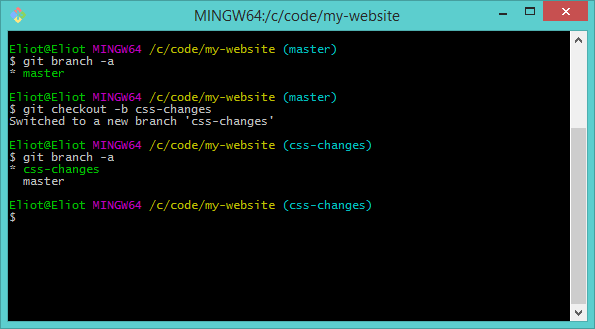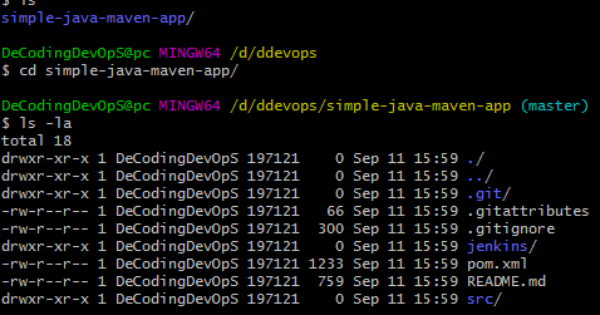

Creating a branch ¶ Create a new branch, containing all the current commits using the git branch command, which, on contrast to git checkout -b doesn't switch to the newly created branch #to confirm the url of your remote repository $ git remote -v #to create a newfeature branch on remote repository and push changes to that branch $ git push origin newfeatur Follow the steps below, to do that.
GIT CREATE BRANCH FROM CHANGES CODE
To push changes made on our local repository to our remote repository, use the below commands on the code snippet. This is a convenient shortcut for: $ git branch $ git switch -C -force-create Similar to -create except that if. The new branch's history will start at the current place of the branch you branched off of The operation is aborted however if the operation leads to loss of local changes, unless told otherwise with -discard-changes or Create a new branch named starting at before switching to the branch.

This will create a new branch off of the current branch.
GIT CREATE BRANCH FROM CHANGES HOW TO
How to create a new branch in Git To create a new branch in Git, you use the git checkout command and pass the -b flag with a name. Now that your work is merged in, you have no further need for the iss53 branch. This is referred to as a merge commit, and is special in that it has more than one parent. Instead of just moving the branch pointer forward, Git creates a new snapshot that results from this three-way merge and automatically creates a new commit that points to it. git checkout master git pull git checkout git checkout -b

Switched to a new branch 'dev How do I create a new branch in Git? Learn Version $ git checkout -track origin/dev Branch 'dev' set up to track remote branch 'dev' from 'origin'. The git stash apply takes the top stash and applies it to the Git Repository Set tracking branches for new local branches In order to switch to the local dev branch, and to set the origin/dev as the tracking branch (or upstream branch), use the -track option. The changes stashed away by git stash can be listed with git stash list. It saves your local changes away for further use and then returns them from your working copy. In case you want to create a new one from a different branch, you should indicate your branch name as the last argument of the command The git stash command is one of the useful features in Git. You must start by creating a local branch using the git checkout command as follows: git checkout -b It will create a new branch from your current branch. See if Git will let you switch without doing anything: $ git checkout develop This will either succeed, or complain. Now you can commit and the new stuff is all on develop. $ git checkout -b develop This creates a new develop branch starting from wherever you are now.This will create your local branch where you can commit as much as you want, but it will be only locally If you haven't committed any files they should stay the same after you do checkout for your newly created remote branch (especially if those 2 branches are identical).To commit changes to new branch with git you can use the following three steps: Create a new branch git checkout -b mynewbranchname This will leave your current branch unedited, create a new branch called mynewbranchname, and you still have your uncommitted changes.To create a new branch that is based on your currently checked out (HEAD) branch, simply use git branch with the name of the new branch as the only parameter: $ git branch How do I create a new branch based on some existing one.click Create Branch Select the previous commit, and create a new branch After you've created the new branch, your unstaged uncommitted work will be waiting for you while you have checked out the.Home Git create new branch with local changes How To Create A GIT Branch With Your Current Changes by


 0 kommentar(er)
0 kommentar(er)
